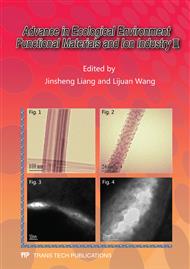p.163
p.169
p.173
p.179
p.185
p.191
p.198
p.203
p.208
The Influence on Electrical Characteristics of Contact WCu and Ti3SiC2 Material
Abstract:
Electrical contractor affects reliability and working life of switches and electrical equipment directly, which is the key component of high-voltage and low-voltage apparatus. Nowadays, all fields of mid-voltage and above are occupied by vacuum switch. The invention of contactor material CuCr promotes the development of electrical contractor material and vacuum switch though the weakness can not be ignored. This paper makes a study and analysis about the performance of traditional electrical contractor material WCu. Its believed that alloy WCu has the high conductivity and high thermal conductivity of W, and the ability to improve applying condition and reduce electrical corrosion of Cu. So the experiment is made to test electrical characteristics of material WCu which is doping with different element. The performance of a new electrical contractor material, named Ti3SiC2, which is better than alloy WCu is put forward. This material meets the requirement, including high voltage, huge capacity, small scale, for switching equipment to develop grid, as the new material has advantage of low density, high modulus, high melting point, and antioxidant and so on. The successful application improves its superiority in the field of electrical contractor material.
Info:
Periodical:
Pages:
185-190
Citation:
Online since:
January 2012
Authors:
Keywords:
Price:
Сopyright:
© 2012 Trans Tech Publications Ltd. All Rights Reserved
Share:
Citation:


